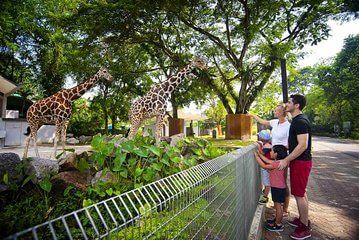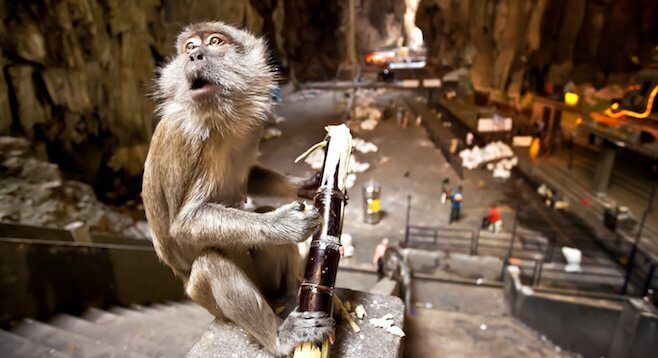How Many Days Do You Need to Fully Experience Kuala Lumpur?
To fully experience Kuala Lumpur, 3 to 4 days is ideal, as it provides enough time to explore the city’s iconic landmarks, dive into its culinary scene, and enjoy nearby attractions. On the first day, you can visit major sites like the Petronas Towers, Batu Caves, and Kuala Lumpur Tower to get a feel for the city’s architectural marvels and panoramic views. The second day can be dedicated to cultural and historical neighborhoods, with stops like Chinatown, Little India, and visits to popular temples.
For food lovers, a Kuala Lumpur Local Food Tour on the third day offers a taste of Malaysia’s multicultural cuisine. Additionally, if you’re interested in nature or a scenic escape, take a day trip to nearby sites such as Malacca or the Genting Highlands.
In short, a 3-day stay offers a balanced itinerary for city highlights, while a 4-day trip allows time for off-the-beaten-path adventures and nearby attractions.
What is the best season to visit Kuala Lumpur for ideal weather?
The best time to visit Kuala Lumpur for ideal weather is during the dry season from May to July. During these months, rainfall is generally lower, and the weather is warm but more manageable, making it a perfect time for sightseeing and outdoor activities. Kuala Lumpur has a tropical rainforest climate, so temperatures stay fairly consistent year-round, averaging between 77°F (25°C) and 95°F (35°C).
If you’re planning on taking tours like the Kuala Lumpur Instagram Tour or exploring nature on the Kuala Lumpur Elephant Sanctuary Tour, this season offers the clearest skies and pleasant conditions. While the city does experience some rain throughout the year, visiting in May to July minimizes the likelihood of heavy downpours disrupting your plans.
Is Kuala Lumpur cheaper than Bangkok for travelers?
Yes, Kuala Lumpur is generally considered to be slightly cheaper than Bangkok for travelers, though both cities offer budget-friendly options as well as luxurious experiences. Accommodation, dining, and transportation costs in Kuala Lumpur can often be more affordable, especially when it comes to mid-range and higher-end hotels and restaurants. Street food and public transit in both cities are very economical, though Bangkok may offer more budget street food options in areas like Chinatown and Khao San Road.
Tours in Kuala Lumpur, such as the Kuala Lumpur Instagram Tour or the Kuala Lumpur Local Food Tour, tend to be competitively priced, and attractions like the Petronas Towers and Batu Caves have affordable entry fees or are free to visit. While both cities provide great value, Kuala Lumpur can often stretch your travel budget a bit further, especially for accommodations and tours.
Why is Kuala Lumpur such a popular travel destination?
Kuala Lumpur is a popular travel destination because it offers a unique blend of modern sophistication, cultural diversity, and natural beauty all in one city. As Malaysia’s capital, Kuala Lumpur is known for its stunning architecture, from the iconic Petronas Towers to the historic Sultan Abdul Samad Building, showcasing both its modern and colonial influences. The city’s multicultural heritage, with vibrant Malay, Chinese, and Indian communities, adds a rich tapestry of traditions, festivals, and, especially, food.
For food lovers, Kuala Lumpur is a paradise, with countless street food options, markets, and specialized tours like the Kuala Lumpur Local Food Tour that let visitors taste the fusion of flavors unique to Malaysian cuisine.
The city’s natural and scenic attractions, such as the nearby Batu Caves and KL Forest Eco Park, offer an escape from the urban bustle. Plus, with easy access to day trips like the Malacca Instagram Tour or the Genting Highlands, visitors can explore Malaysia’s diverse landscapes without venturing far from the city. Kuala Lumpur’s shopping scene is also a major draw, from luxurious malls to vibrant street markets.
What Are the Best Things to Buy in Kuala Lumpur?
Kuala Lumpur offers an array of unique and culturally significant items that make for fantastic souvenirs. Here are some of the best things to buy:
Batik Textiles – Batik, a traditional Malaysian fabric with colorful patterns, is often hand-dyed and crafted into scarves, shirts, and dresses. You can find beautiful batik items at local markets and specialty shops.
Pewter Goods – Malaysia is renowned for its high-quality pewter, and Kuala Lumpur is home to Royal Selangor, one of the oldest and largest pewter manufacturers. Pewter items range from tableware to decorative pieces and make for refined gifts.
Local Snacks and Spices – Kuala Lumpur is a haven for food lovers, and you can bring home a taste of the city with traditional snacks like kuih (local sweets), dried fruits, and spices. Popular spice blends include rendang, curry, and laksa, perfect for recreating Malaysian dishes at home.
Malaysian Handicrafts – Kuala Lumpur’s markets, such as Central Market, are full of traditional handicrafts, including wood carvings, woven baskets, and pottery. These handmade items showcase Malaysia’s rich craftsmanship and cultural heritage.
Malay Songket – Songket is a luxurious, handwoven fabric often decorated with gold or silver threads, traditionally used in Malay attire. Songket items, like shawls or sarongs, are exquisite and highly valued for their beauty.
Tea and Coffee – Malaysia’s tea and coffee culture is vibrant, with locally grown options like Boh Tea from the Cameron Highlands and Ipoh White Coffee. These are widely available in Kuala Lumpur and make for a flavorful souvenir.
Herbal Remedies and Essential Oils – Kuala Lumpur is known for its herbal products, especially those inspired by Malay and Chinese medicine. Essential oils, herbal balms, and spa products are popular buys for those looking to bring a bit of Malaysian wellness home.
Electronics and Gadgets – Kuala Lumpur’s shopping malls, such as Berjaya Times Square and Pavilion KL, are also popular for electronics. While prices vary, you can often find good deals on gadgets, accessories, and more.
For an immersive shopping experience, consider joining a Kuala Lumpur Cultural City Tour or exploring markets like Petaling Street in Chinatown with a guide, who can help you discover the best local finds and bargains.
How Should You Dress When Visiting Batu Caves?
When visiting the Batu Caves in Kuala Lumpur, it’s important to dress modestly as a mark of respect for this sacred Hindu site. Both men and women should cover their shoulders and knees, so long skirts, pants, or maxi dresses are ideal for women, while men should wear pants or knee-length shorts. Avoid revealing clothing like sleeveless tops or short skirts; if necessary, women can bring a scarf or shawl to cover bare shoulders. Comfortable footwear is also recommended, as the visit involves climbing a steep staircase of over 270 steps. Following these guidelines ensures a respectful and comfortable visit.













 +1 617 404 2125
+1 617 404 2125

 All-inclusive
All-inclusive
 Private Tour
Private Tour







